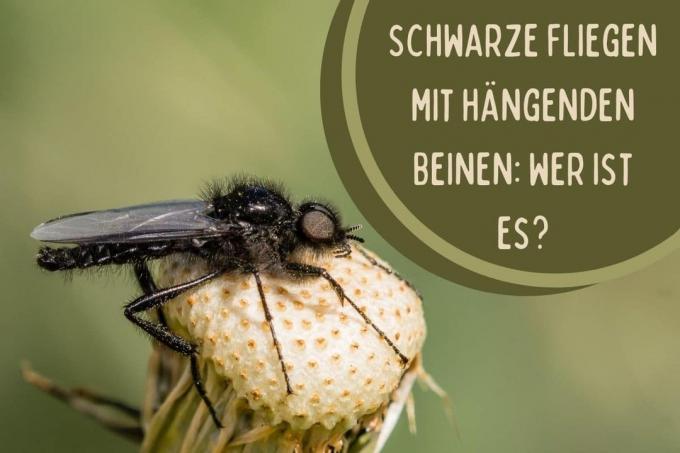
table of contents
- March flies
- Features and occurrences
- Life cycle
- Useful or harmful
- Frequently asked questions
If black flies with hanging legs appear in the garden in spring, many hobby gardeners worry about the "infested" plants. And the question arises, "To fight or not to fight?"
In a nutshell
- March flies are actually mosquitos
- do not sting
- harmless to humans
- March flies are classified as beneficial insects
- Enormous occurrence of the native insects between March and May for pairing
March flies
If you come across a swarm of insects with black, drooping legs, they are March flies. Because the typical characteristic of the males are the hanging legs in flight. The March fly is a species of the hair gnat family (Bibionidae). The scientific name of the March hair mosquito, as the March fly is also called, is Bibio marci. The term "flies" comes from the fact that mosquitoes look very similar to flies. March flies

- are native to Europe
- occur in swarms
- are the most common type of hair mosquito
Features and occurrences
In addition to the hanging legs in flight of the males, you can recognize the "flies" with the naked eye by the following features:
- deep black glossy Mosquitoes
- eight to eleven millimeters long
- Female with black wings
- Males with milky wings
- Hair on the head, legs and body
March flies occur from March to May. The insects swarm especially often around the 25th April, that is the day of remembrance of Saint Mark, which is why they are also called Mark's fly or Mark's hair mosquito. The mosquitoes basically fly every year, but in some years they appear in very large numbers. These hair gnats are buzzing in the garden. a. around shrubs and small plants. They also like to be near water.
Note: March flies are harmless to humans because they are not stuck.
Life cycle
Only one generation of these hair mosquitoes flies each year. The lifespan of adults is short, as they are soon after mating or die of oviposition. To ensure the conservation of the species, each female lays around 100 eggs in the loose soil. The next generation hatches after 35 to 40 days. The approximately two centimeters large, gray larvae develop in the ground and also overwinter there until they swarm out after pupation to find a partner for reproduction. This leads to mass clusters, but these will resolve on their own after mating.

Useful or harmful
March flies are now classified as beneficial insects. Since the adults feed on nectar, they play an important role in pollination. Because they already fly when it is still too cold for bees and bumblebees and look for the flowers even in rainy weather.
For a long time it was controversial whether the larvae of the St. Mark's fly should also be classified as beneficial insects. Today they are counted among the beneficial insects, but this classification is associated with a small "but". Usually vegetable waste is what the larvae feed on. They thus contribute to the degradation processes in the soil and are among the humus formers. However, if drought prevails and / or there is a massive occurrence, they can also eat live root stocks, such as those of tomatoes or potatoes. Nonetheless, mosquitoes are most useful and should not be controlled by them.
Frequently asked questions
Small black flies, only one to seven millimeters in size, that have settled in the pots of indoor plants can be assigned to the fungus gnats. Since their larvae like to eat the roots of the plants, you should fight these insects.
Natural enemies include birds and insectivores. In addition, the insects are afflicted by a special parasite that first lives in the head of the animals and then pupates in the abdomen.



